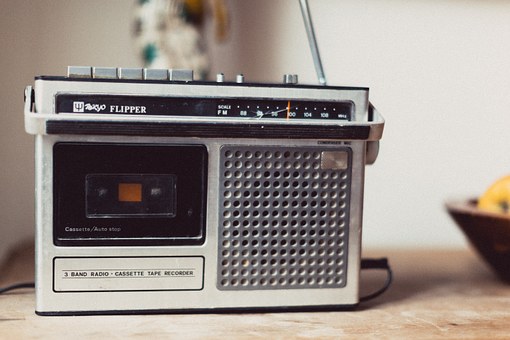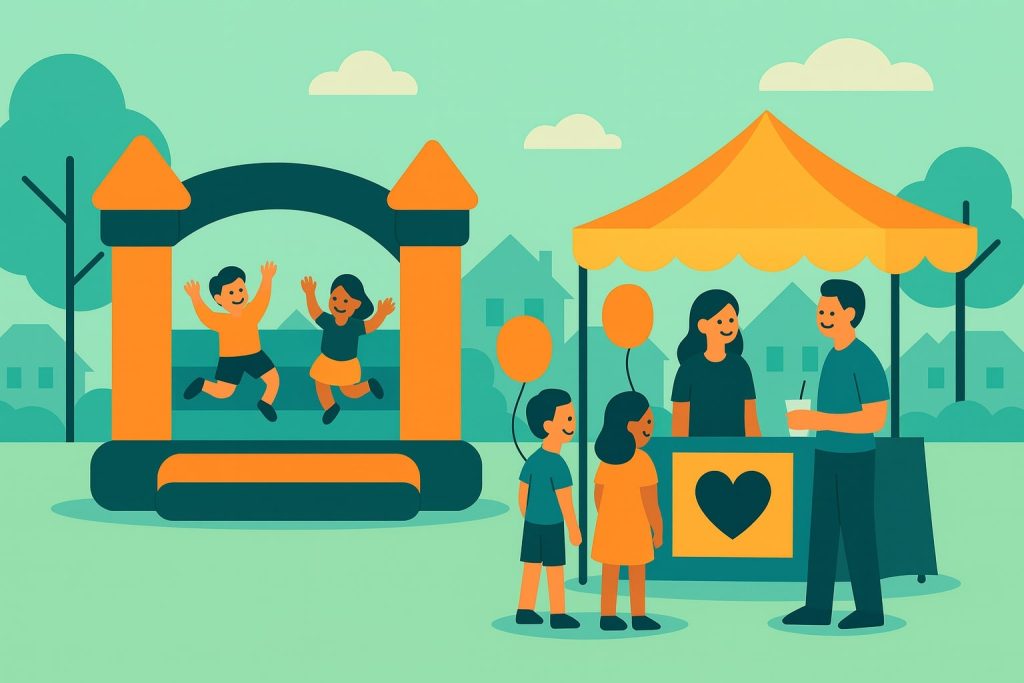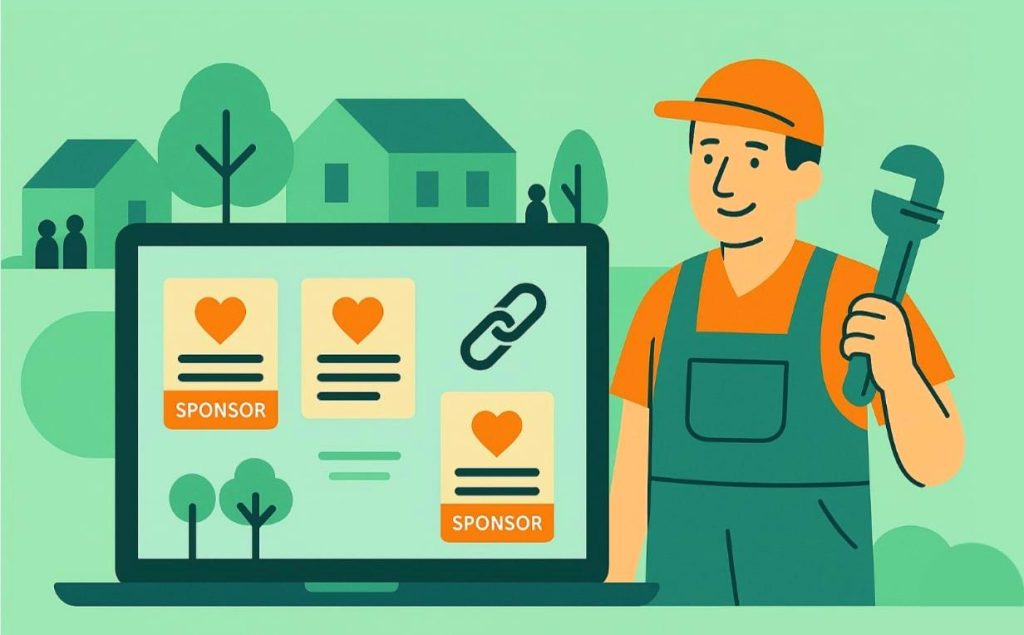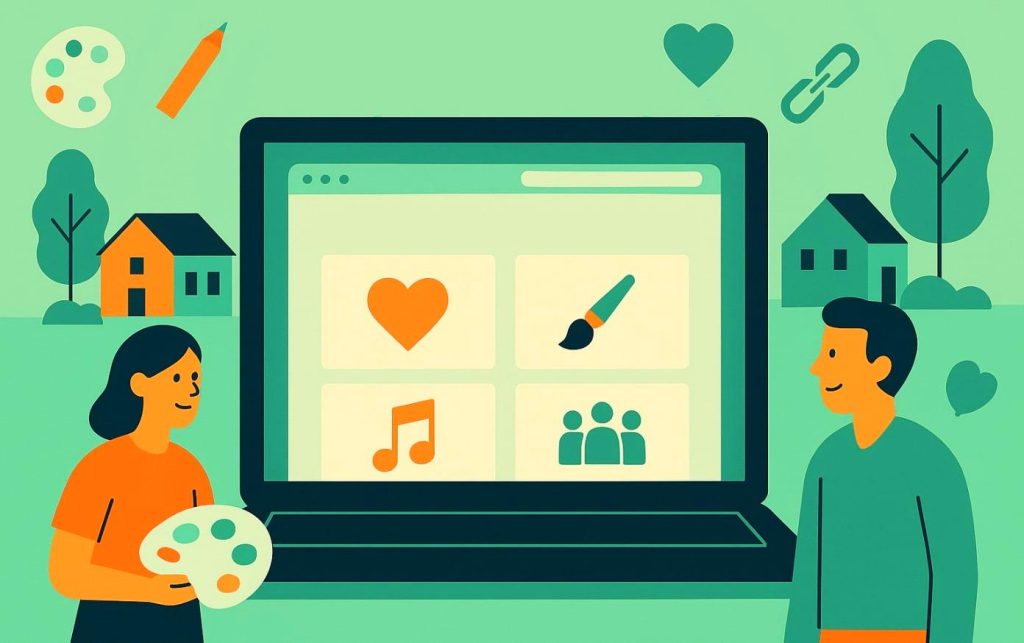Recently, I had the pleasure of interviewing Ernesto Aguilar, Membership Program Director for NFCB (National Federation of Community Broadcasters). When I asked him at the end of the interview, “If you could change one thing about the public perception of community radio, what would that be?” He promptly replied, “That they actually know we exist.”
I couldn’t agree more. As a ZipSprout matchmaker, I see tremendous value in supporting these stations, both ethically and financially.
Community radio stations are driven by the same idealism that ferments most non-profit organizations. Their mission statements often include the values I search for on behalf of ZipSprout clients:
-
- Localism
- Community participation
- Positive impact or message.

What Defines Community Radio?
 So what exactly is “community radio” as compared to “public radio,” “college radio,” or “LPFM (Low Frequency FM) radio?” According to Aguilar, the term was coined 30-40 years ago, to specify that this is radio that focuses on a specific community. The FCC licenses these stations as “noncommercial/educational,” so they must have content focused on the concerns of a particular region or group of people. They are prohibited from selling advertising but can accept support for activities related to their mission statement. The FCC has given some guidelines on the difference.
So what exactly is “community radio” as compared to “public radio,” “college radio,” or “LPFM (Low Frequency FM) radio?” According to Aguilar, the term was coined 30-40 years ago, to specify that this is radio that focuses on a specific community. The FCC licenses these stations as “noncommercial/educational,” so they must have content focused on the concerns of a particular region or group of people. They are prohibited from selling advertising but can accept support for activities related to their mission statement. The FCC has given some guidelines on the difference.
Community radio includes most of the alternative stations you find on the lower part of your FM dial. Most are legally set up as non-profits and are run in a similar fashion. In other words, community radio entails:
- reliance on numerous volunteers
- covering operational expenses from a variety of sources
- a staff dedicated to their mission.
These stations can be dedicated to:
- preserving a language (KSUT serving the Southern Ute tribe)
- public education related to a religion (KSBJ Christian radio)
- providing college students with experience in radio (WXDU for Duke University)
- promoting a certain style of music (WNCU for jazz or KUCO for classical)
- preserving local culture not represented on commercial radio (WMMT for Appalachia, KUYI for the Hopi tribe, KKCR in Hawaii)
- giving community members a voice (WCOM, for the creative class of Carrboro, NC)
and possibly include NPR programming or alternative news sources like Pacifica. It’s content, not wattage, that is the deciding factor on whether the station serves a community.
Funding the Frequency!
Since Aguilar is the Past-Treasurer for NFCB, I wanted to get his insights into the financial needs of the average community radio station. He mentioned the necessity for all three of the primary sources for a station to raise money:
- From Members (Pledge Drives, In-kind Donations)
- From Events and Community Engagement (Concerts, Galas, Raffles, etc.)
- Underwriting from the Business Community or grants.
Aguilar mentioned that NFCB is looking to support their member stations’ efforts to enhance underwriting and explore new types of community engagement. There have been a few stations able to pull in dollars from outside the community (while maintaining respect for their mission statement) but for most stations the community served is the one supporting the station. NFCB provides tools to their member stations to help with both underwriting and grant sources. However, he believes that expanding a station’s community engagement makes for a deeper relationship with the community served. In his opinion new types of events help a station to diversify community outreach, attract a fresh set of volunteers, and forge new connections with community influencers.
 In my own perusal of events put on by these stations, I was impressed with their creativity. How about a yellow rubber ducky race, a solar powered music center, a vintage Grateful Dead poster, or Waterfront Wednesdays. This free monthly music festival put on by WFPK in Louisville takes advantage of a beautiful river park, a pedestrian bridge across the river, and an abundance of local support.
In my own perusal of events put on by these stations, I was impressed with their creativity. How about a yellow rubber ducky race, a solar powered music center, a vintage Grateful Dead poster, or Waterfront Wednesdays. This free monthly music festival put on by WFPK in Louisville takes advantage of a beautiful river park, a pedestrian bridge across the river, and an abundance of local support.
According to the Washington Post there are currently 776 community radio stations (445 rural and 310 urban) in the USA and the list is growing as newcomer LPFM stations file applications. There is a healthy diversification with 45 Latino, 52 Native American, and 32 African American stations. Only 404 stations receive funds from the Corporation for Public Broadcasting. Their audiences are highly loyal and, according to Aguilar, the 200 plus member stations of NFCB reach a broad demographic. This is certainly true for medium and small market radio as shown by a 2015 report put out by Nielsen Audio.
Future Amplification!
Interestingly, Pew Research has studied the staying power of radio in the face of digital competition. The demographic shifts they found from 2001-2011 support the belief that streaming is beneficial to a station’s growth. Almost all community radio stations have a website and some put it to very good use, such as WORT. However, streaming and podcasts are newer features and many stations are only just beginning to consider them. According to Aguilar, NFCB is encouraging this trend and working to develop a model that stations can use to increase both community engagement and revenue sources from streaming. Since NPR has had success using streaming, they took their cue from that. All this adds up to the fact that for many community radio stations (once they get over the hurdle of resources) streaming and podcasts have been their greatest opportunity for growth.
 iTunes currently has 250,000 podcasters (mostly in English) with an estimated 1 billion subscriptions. That’s 3-5,00 listeners per podcast. Web startup companies and app developers should note that 64% of podcast consumers use a mobile device to access this on demand content. This means a radio station’s podcast can reiterate a thank-you to a sponsor. Some radio stations have joined in this trend with offering their own app, such as WCHQ. While Nielson and Pew haven’t published any news yet about SEO and radio underwriting, it makes sense that there is potential.
iTunes currently has 250,000 podcasters (mostly in English) with an estimated 1 billion subscriptions. That’s 3-5,00 listeners per podcast. Web startup companies and app developers should note that 64% of podcast consumers use a mobile device to access this on demand content. This means a radio station’s podcast can reiterate a thank-you to a sponsor. Some radio stations have joined in this trend with offering their own app, such as WCHQ. While Nielson and Pew haven’t published any news yet about SEO and radio underwriting, it makes sense that there is potential.
Community radio station websites often have good website authority and greatly appreciate support. These stations offer a variety of ways to donate and are open to discussing options. Plus, community radio gives voice to parts of America that are not represented on big media outlets. Through them, it is possible to reach audiences that are targeted or hard to reach normally. They are as democratic as the internet. When you add streaming and podcasts to this mix, that thank-you that comes from the DJ is the whipped cream on top of the pie.


